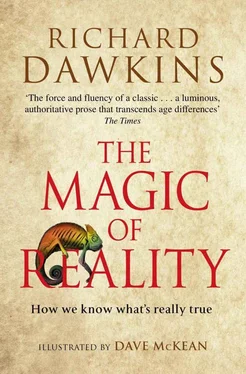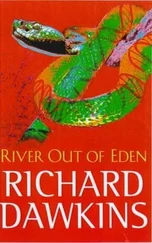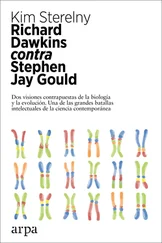Our increasingly powerful cannon has illustrated all the stages towards and beyond the establishment of an orbit. First the ball just flops into the sea. Then, as we fire successive balls with increasing force, the curve of their travel becomes increasingly horizontal until the ball reaches the necessary speed to go into a near-circular orbit (remember that a circle is a special case of an ellipse). Then, as the speed of firing increases more and more, the orbit becomes less circular and more elongated, more obviously elliptical. Finally, the ‘ellipse’ becomes so elongated that it ceases to be an ellipse at all: the ball reaches escape velocity and disappears altogether.
The Earth’s orbit around the sun is technically an ellipse, but it is very nearly the special case of a circle. The same is true of all the other planets except Pluto (which is not considered a planet nowadays anyway). A comet, on the other hand, has an orbit like a very long, thin egg. The ‘pins’ that you use to draw its ellipse are very far apart.
One of the two ‘pins’ for a comet is the sun. Once again, the other ‘pin’ is not a real object in space: you just have to imagine it. When a comet is at its furthest distance from the sun (called ‘aphelion’, pronounced app-heeleeon ) it travels at its slowest rate. It is in free fall the whole time, but some of the time it is falling away from the sun, rather than towards it. Slowly it turns the corner at aphelion, then it falls in the direction of the sun, falling faster and faster until it zooms round the sun (the other ‘pin’) and reaching its highest speed when it is at its closest point to the sun, called perihelion. (‘Perihelion’ and ‘aphelion’ come from the name of the Greek sun god Helios; peri is the Greek for ‘near’ and apo means ‘far’.) The comet whizzes fast around the sun at perihelion, and carries on away from it at high speed on the other side of perihelion. After slinging itself around the sun, the comet gradually loses speed as it falls away from the sun all the way to aphelion, where it is at its slowest; and the cycle keeps repeating itself over and over again.
Space engineers use something called the slingshot effect to improve the fuel economy of their rockets. The Cassini space probe, which was designed to visit the distant planet Saturn, travelled there by what seems like a roundabout route, but was actually cunningly planned to exploit the slingshot effect. Using far less rocket fuel than would have been needed to fly directly to Saturn, Cassini borrowed from the gravity and orbital movement of three planets on the way: Venus (twice), then a return swing around Earth, then a final mighty heave from Jupiter. In each case it fell around the planet like a comet, gaining speed by hanging onto its gravitational coat tails as the planet whizzed around the sun. These four slingshot boosts hurled Cassini out towards the Saturn system of rings and 62 moons, from where it has been sending back stunning pictures ever since.
Most of the planets, as I said, orbit the sun in near-circular ellipses. Pluto is unusual, not just in being too small to be called a planet any more, but also in having a noticeably eccentric orbit. Much of the time it is outside the orbit of Neptune, but at perihelion it swoops inside and is actually closer to the sun than is Neptune, with its near circular orbit. Even the orbit of Pluto, however, is nothing like as eccentric as that of a comet. The most famous one, Halley’s Comet, becomes visible to us only near perihelion, when it is closest to the sun and reflects the sun’s light. Its elliptical orbit takes it far, far away, and it returns to our neighbourhood only every 75 to 76 years. I saw it in 1986 and showed it to my baby daughter Juliet. I whispered in her ear (of course she couldn’t understand what I was saying, but I obstinately whispered it anyway) that I would never see it again, but that she would have another chance when it returned in 2061.
The ‘tail’ of a comet, by the way, is a train of dust, but it is not streaming out behind the head of the comet as we might think. Instead, it is ‘blown’ by a stream of particles coming from the sun, which we call the solar wind. So the tail of the comet always points away from the sun, no matter which way the comet is travelling. There’s an exciting proposal, once confined to science fiction stories but now being implemented by Japanese space engineers, to use the solar wind to propel spacecraft equipped with gigantic ‘sails’. Like sailing yachts on the sea using real wind, solar wind space-yachts would theoretically provide a very economical way to travel to distant worlds.
A sideways look at summer
Now that we understand orbits, we can go back to the question of why we have winter and summer. Some people, you’ll remember, wrongly think it is because we are closer to the sun in summer and further away in winter. That would be a good explanation if Earth had an orbit like Pluto’s. In fact Pluto’s winter and summer (both very much colder than anything we experience here) are caused in exactly that way.
The Earth’s orbit, however, is almost circular, so the planet’s closeness to the sun cannot be what causes the changing seasons. For what it is worth, the Earth is actually closest to the sun (perihelion) in January and furthest (aphelion) in July, but the elliptical orbit is so close to circular that it makes no noticeable difference.
Well then, what does cause the change from winter to summer? Something quite different. The Earth spins on an axis, and the axis is tilted. This tilting is the true reason why we have seasons. Let’s see how it works.
As I said before, we could think of the axis as an axle, a rod running right through the globe and sticking out at the North Pole and the South Pole. Now think of the orbit of the Earth around the sun as a much larger wheel, with its own axle, this time running through the sun, and sticking out at the sun’s ‘north pole’ and the sun’s ‘south pole’. Those two axles could have been exactly parallel to each other, so that the Earth did not have a ‘tilt’ – in which case the noonday sun would always seem to be directly overhead at the equator, and day and night would be of equal length everywhere. There would be no seasons. The equator would be perpetually hot, and it would become colder and colder the further you moved away from the equator and towards either of the poles. You could get cool by moving away from the equator, but not by waiting for winter because there would be no winter to wait for. No summer, no seasons of any kind.
In fact, however, the two axles are not parallel. The axle (axis) of the Earth’s own spinning is tilted relative to the axle (axis) of our orbit around the sun. The tilt is not particularly great – about 23.5 degrees. If it were 90 degrees (which is about the tilt of the planet Uranus) the North Pole would be pointing straight towards the sun at one time of year (which we can call the northern midsummer) and straight away from the sun at the northern midwinter. If Earth were like Uranus, in midsummer the sun would be overhead all the time at the North Pole (there’d be no night there), while it would be icy cold and dark at the South Pole, with no suggestion of day. And vice versa six months later.
Since our planet is actually tilted at only 23.5 degrees instead of 90 degrees, we are about a quarter of the way from the no seasons extreme of no tilt at all towards the Uranus extreme of near total tilt. This is enough to mean that, as on Uranus, the sun never sets at the Earth’s North Pole in midsummer. It is perpetual day; but, unlike on Uranus, the sun is not overhead. It seems to loop around the sky as the Earth rotates, but it never quite dips below the horizon. That is true throughout the Arctic Circle. If you stood right on the Arctic Circle, say on the north-west tip of Iceland, on midsummer day, you’d see the sun skim along the northern horizon at midnight, but never actually set. Then it would loop around to its highest position (not very high) at midday.
Читать дальше











